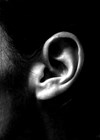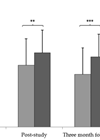Audiology features archive for July 2015
When patient choice stands in the way of patient-centredness
In the field of hearing care, there is increasing focus on ensuring patient autonomy and choice. Greater participation in decision making is supposed to result in better patient satisfaction. A study conducted in ENT and audiology clinics paradoxically suggests that...
Three is not a crowd! Involving family members in audiology appointments
Family members currently have minimal involvement in the appointment. Image by Caitlin Grenness. Hearing loss in older adults not only affects the patients themselves, but also their family members. This article outlines the findings of recent research into how family...
Integrating technology into audiological rehabilitation programmes
In the future, the rehabilitation of adults with hearing loss is likely to involve modern information technology. Using the Internet in the audiological rehabilitation process might be a cost-effective way to include additional rehabilitation components by guiding hearing aid users...
The role of significant others in hearing aid adoption
Presbycusis, or age-related hearing loss, is one of the most common conditions affecting older adults and its prevalence is found to increase with age. Over the years, amplification technology has advanced significantly from analogue to digital signal processing. Despite this,...
A cognitive therapy programme for hearing impairment: reducing avoidance and mental distress
Cognitive behavioural therapy (CBT), a psychotherapeutic treatment method, is most commonly used to treat anxiety and depression. Newly published results from a controlled, clinical study demonstrate that an adapted CBT programme is useful for several common challenges in aural rehabilitation;...
Neural plasticity and aural rehabilitation
Neural plasticity refers to an ability of the brain and central nervous system to change their structure and function or their reorganisation in response to environmental cues, experience, learning, behaviour, injury and / or diseases and treatments. Neural plasticity is...
Combined use of a hearing aid and a cochlear implant: a case study
When multi-channel cochlear implants (CIs) were first introduced in the 1980s, their use was restricted to people who derived no benefit from conventional amplification. Over the past three decades, however, the criteria for CIs has been relaxed considerably, and it...












